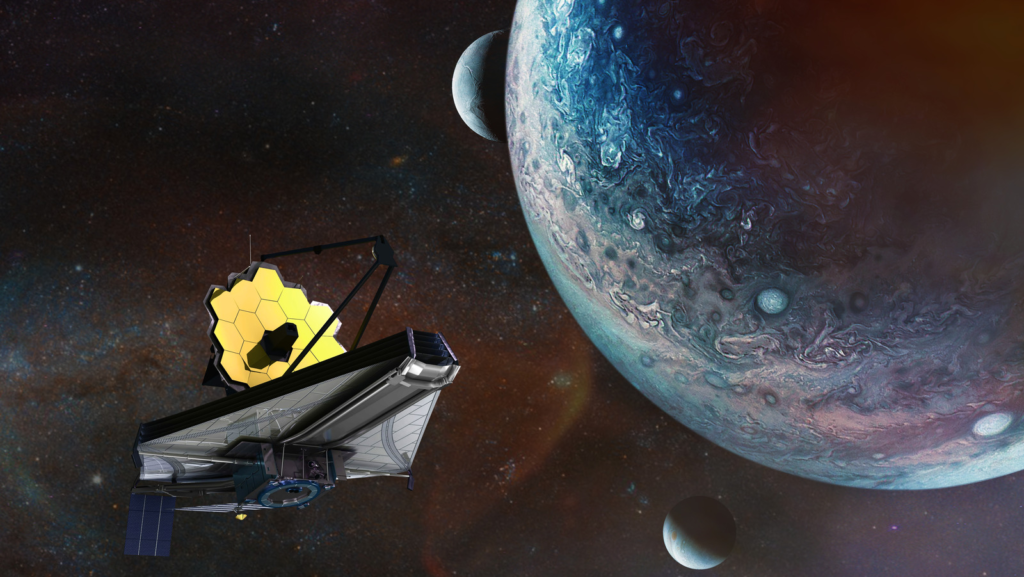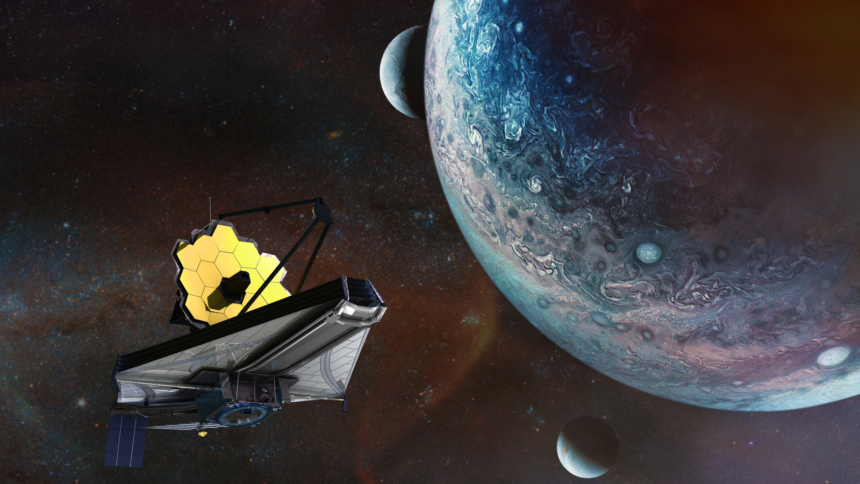
The James Webb Space Telescope’s Surprising Findings in the PDS 70 Star System
Introduction
In a groundbreaking discovery, the James Webb Space Telescope has detected water vapor within the inner disk of the PDS 70 planetary system, a region where rocky, Earth-like planets are believed to be forming. The presence of water is crucial for the development of life as we know it, making this finding a significant milestone in our understanding of planetary formation and the potential for habitable worlds beyond our solar system.
**A Surprising Find in a Faraway Star System**
The PDS 70 system, located approximately 370 light-years away from Earth, revolves around a K-type star that is relatively older, cooler, and has planet-forming disks. These disks, comprised of gas and dust, are essential for the formation of planets. However, with time, the material within these disks typically diminishes, as the star’s radiation and winds disperse it, or it coalesces to form larger celestial bodies.
In this context, the recent discovery of water vapor in the inner disk of PDS 70 is nothing short of astounding. The region houses two gas-giant planets and lies within 160 million kilometers of the host star. This is the first time water has been detected in the “terrestrial region” of a disk hosting multiple early planets, raising intriguing questions about how water reaches such locations and the conditions that allow it to persist.
**Unraveling the Origins of Water in PDS 70**
The presence of raw materials in the form of silicates within the inner disk indicates the potential for rocky, terrestrial planets to form in the region. Scientists speculate that these planets may possess water from their very inception. But how did this water arrive at such a close proximity to the star?
There are two prevailing scenarios put forth by researchers. The first involves the formation of water molecules directly within the region, as hydrogen and oxygen atoms combine under specific conditions. The second possibility suggests that ice-coated dust particles, originating from the cooler outer disk, are transported inward to the warmer inner disk, where the water eventually turns into vapor.
A puzzling aspect of the discovery is how water molecules can survive in such close proximity to the star, where strong ultraviolet radiation would typically break them apart. However, scientists propose that surrounding materials, such as dust, act as a protective shield, allowing the water vapor to endure these harsh conditions.
Implications for Understanding Planetary Formation
The detection of water vapor in the inner disk of PDS 70 raises intriguing questions and presents new avenues of research. By studying this distant star system, astronomers hope to gain insights into the processes responsible for the emergence of life-giving water on Earth and potentially on other rocky planets throughout the universe.
Understanding how water is distributed and survives in different planetary systems is crucial for our understanding of the potential habitability of exoplanets. The discovery in PDS 70 offers tantalizing hints about the conditions necessary for the formation of water-rich worlds.
**The Road Ahead: Webb’s Continuing Quest**
The James Webb Space Telescope, with its advanced capabilities, promises to unravel further mysteries surrounding the formation of planets and the potential for life beyond our solar system. As scientists continue to study distant star systems like PDS 70, they hope to unlock the secrets of our own planet’s origins and find clues to the existence of habitable environments elsewhere in the cosmos.
The discovery of water in the inner disk of PDS 70 is just the beginning of Webb’s exciting journey, and the telescope’s observations will undoubtedly revolutionize our understanding of the cosmos and our place in it. As we eagerly await future revelations from the Webb telescope, one thing remains certain: the search for water and life among the stars has taken a giant leap forward.
Conclusion
The James Webb Space Telescope’s discovery of water vapor in the inner disk of the PDS 70 star system has opened up a new chapter in our understanding of planetary formation and the potential for life beyond our solar system. The presence of water in a region where rocky planets could be forming holds the promise of revealing the secrets behind the origins of water on Earth and how it might exist on other distant worlds. As Webb continues its mission to explore the universe, astronomers eagerly anticipate more revelations that could reshape our understanding of life’s cosmic potential.











